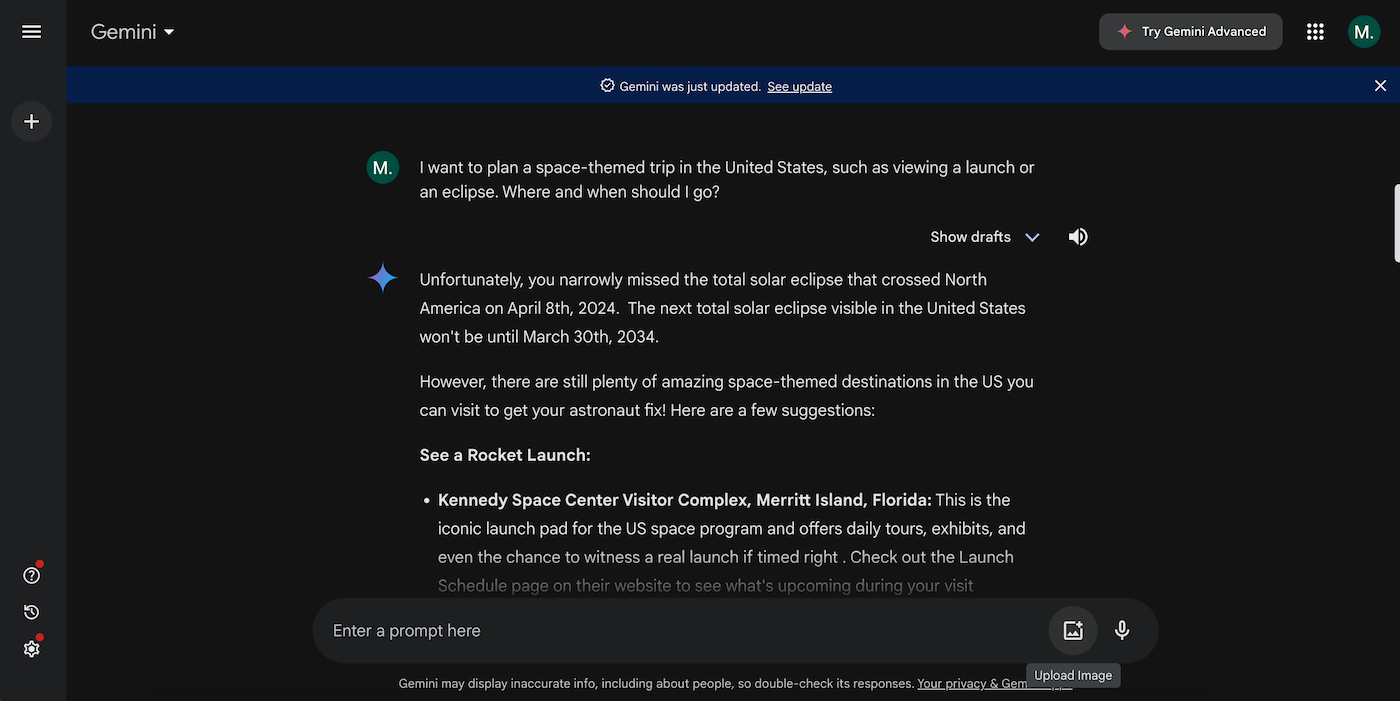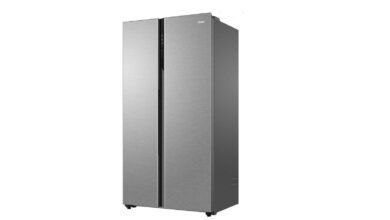Google Gemini (formerly Bard) vs Cloud.AI: Who is better?
With the proliferation of generative AI, it can be hard to tell which of these AI assistants for coding and creative work is right for your business. The two leading AI assistants are Google Gemini (formerly Bard) and Anthropic’s Claude.ai.
This article compares the main capabilities of the two AI assistants, which are free until July 2024. To use Gemini, you must sign in with a Google account. To use the cloud, you must sign in with a Google account or email address. In any case, if you use a Google Workspace account, you should check with your administrator to make sure that access is allowed.
What is Google Gemini?
Contents [hide]
Gemini is an experimental conversational AI system designed by Google. As a large language model, Gemini can generate responses of text, code, and other content in response to an entered prompt or image. Google launched Gemini (as Bard) in the first quarter of 2023. In February 2024, Google renamed Bard to Gemini to reflect that users could access a family of AI models, not just one chatbot, through the same brand name.
What is cloud.ai?
Cloud.AI is a publicly available beta of Anthropic’s conversational AI system. It was launched at the same time the company announced Cloud 2 in mid-2023. Since then, Cloud.AI has been updated to the latest version of Anthropic’s model, Cloud 3.5 Sonnet. Anthropic has emphasized its efforts to design the cloud with an emphasis on AI security.
Gemini vs. Cloud: Comparison Table
The chart below highlights the key differences between Google’s Gemini and Anthropic’s Cloud.
| Speciality | ||
|---|---|---|
| manufactured by | ||
| Available Countries | ||
| language support | ||
| Coding Support | ||
| Connect to the internet for the latest information | ||
| Accepts image uploads | ||
| Accepts text file uploads | ||
| Reference Window* | ||
| Export Options | ||
|
|
The context window determines how much length of content the system can retain and respond to at once. Simply put, if you exceed the limit, the system can respond in a way that indicates a lack of “retention” or “understanding” of the content beyond the window. A longer window makes the analysis of longer documents possible.
Gemini vs Cloudera Pricing
Using Gemini and Cloud.AI is free. Anthropic offers paid Pro and Team plans with multiple seats and higher rate limits on Cloud.AI. Pro costs $20 per user per month, while Team costs $25 per user per month. Google offers Gemini Advanced, which lets Gemini interface directly with Gmail and Docs and adds 2 TB of storage. You can use Gemini Advanced through a Google One AI Premium subscription, which costs $19.99.
The most notable competitor to these two systems, OpenAI’s ChatGPT, offers both a free version and a more capable version for a $20-per-month upgrade.
Google and Anthropic also want to meet the AI needs of enterprises and developers. Google offers a wide range of AI and machine learning systems, while Anthropic provides access to different versions of the cloud, each optimized for different situations and price points.
Feature Comparison: Google Gemini vs Cloud.AI
Conversational chat
Both Gemini and Cloudy work like traditional AI chatbots: you type a prompt, and the system replies with a response. As conversational chat systems, they give you context of previous prompts in the chat. For example, if your first prompt is a request to provide a summary of a book:
Can you summarize the key recommendations in the book “Power and Progress: Our Thousand-Year Struggle Over Technology & Prosperity”?
A question asked later in a chat conversation with the intent of learning about the authors might be:
Who wrote it?
The system must understand precisely that “this” refers to the book and “who” refers to the authors. Compare this to a legacy search, where summarizing the main points is simply not possible and where you would need to combine everything into a keyword search query to find the authors.
A key difference between the two systems is that Cloud supports a much longer context window than Gemini. The result is that Cloud can work with longer text and also allows for more detailed conversation on a topic than Gemini.
Write text
Gemini and Cloud work well when you want the system to generate text. For example, you can ask either system to write text for any purpose, such as an email, marketing copy, cover letter, or blog post. Explain in as much detail as possible what kind of text you want, its length, and type, and both systems will produce useful text. Not happy with the result? Explain clearly how you need to modify the tone, content, length, or structure of the text, and ask Gemini or Cloud to try again.
Generate suggestions
Gemini and Cloud are great when you ask for suggestions. Ask any chatbot for a list of things you want to know, discover, or read about, and you’re likely to get at least a few relevant items. If you have examples, include them to provide context and steer the system toward a more relevant response.
Remember, both of these systems can provide inaccurate, misleading, or completely incorrect information, so you may need to verify the content for accuracy.
SEE ALSO: Hiring Kit: Prompt Engineer (TechRepublic Premium)
Cloud.ai: Advantages and Disadvantages
The specialty of the cloud is that it is able to work with long text files, thanks to the system’s fairly long reference window. You can upload up to five files of up to 10MB each with your message.
For example, you can upload one or more sample technology plans, guides, or strategy documents. Once shared, you can explore various details in those documents with the cloud. Alternatively, you can provide relevant details about another organization or client to the cloud and ask the system to write a new plan from previous example plans you have uploaded.

Sides of the Cloud
- Excellent long document capabilities (200k+ tokens with Cloud Pro or around 500 pages of text due to the long reference window).
- Up to five files up to 10MB each can be uploaded as part of a prompt.
- Extensive support for coding/programming languages.
Cons of the Cloud
- No access to internet search.
Google Gemini: Pros and Cons
Gemini’s ability to access the Internet and accept image input makes this system different from the cloud. Gemini can leverage search to include recent news, weather, and other information in responses, unlike some larger language models that lack access to information after a set date. In many cases, this allows Gemini to provide up-to-date data in responses, including a sample prompt about an event that happened in the past month. Additionally, since Gemini includes many of the image capabilities first launched in Google Lens, you can upload a JPEG, PNG, or WebP file and then chat about the image content. (Gemini’s image capabilities are initially only available when used in English.)

Advantages of Gemini
- Available in multiple languages.
- Internet search.
- Built-in export for Gmail, Google Docs, and public sharing.
Disadvantages of Gemini
- Lack of support for file uploads.
- Limited reference window compared to Cloud.ai.
Should you use Gemini or the cloud?
Gemini and Cloudy represent cutting-edge conversational AI systems whose capabilities are rapidly evolving. When you want to experiment with a generative AI tool, either of these systems is a great choice.
However, when your chat requires internet access or image support then Gemini is clearly the best choice, while when your chat could benefit from uploaded documents or longer conversation context then the cloud is clearly the better choice.
Experiment with both AI systems to get familiar with their capabilities, and then choose the chatbot that can best help you accomplish a specific task.
Methodology
This comparison relied on a detailed review of each vendor’s announcements, experimentation with each system, and manual testing of specific features that will be publicly available between July 2023 and June 2024. Since both companies are frequently adding capabilities, you may want to check out the latest Google Gemini updates or Anthropic announcements to learn about recently added features.
Editor’s note: This article has been updated by Megan Krause.
#Google #Gemini #Bard #Cloud.AI




